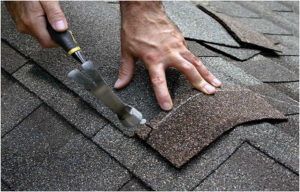
Fluctuating Roof Temperatures: Cause and Effect
A roof can be thought of as a rubber band. Rubber bands and roofs have elastic properties. They can shrink or stretch depending on temperature, age, material, and other factors. Older roofs have a greater degree of elasticity than newer ones. Newer roofs are less affected by fluctuating roof temperatures than older roofs. Roofs become stiffer with time, making them more susceptible to thermal shock. How does thermal shock occur?
You would be amazed at how hot your roof can get if you took a thermal photo of it. Your roof can reach over 100 degrees Fahrenheit even if it is only 80 degrees outside. Temperature fluctuations and thermal shock can be caused by weather conditions, seasonal changes, melting snow, or ice. Summer thunderstorms can disrupt a hot day and drastically drop your roof’s temperature.
The exterior and underlayment of a roof are made up of fasteners and insulations. Each roofing material reacts differently to fluctuating roof temperatures. This means that they shrink and grow at different rates.
Asphalt
Most household shingles are made of asphalt or another similar material. Asphalt is a great roofing material because it absorbs heat and remains durable for long periods. It is still susceptible to thermal shock. The roof assembly is interconnected with asphalt tiles, which causes them to shift or loosen as roof temperatures change. The tiles bump into each other, causing thermal shock. The heat can lead to granular loss that makes asphalt shingles less durable over time.
Clay
Clay is a great roofing material for dry, hot climates. Clay shingles and roofs have been used by homebuilders for thousands of years. Clay roofing doesn’t shrink and expand like other roofing materials. Clay roofing is best used in dry areas due to its poor relationship with water. Clay roofing can be damaged by rapid temperature and moisture changes.
Slate
Slate is an expensive but highly effective roofing material. Slate is not flexible but it can be installed in sections, which means that slate lasts longer than other roofing materials. Slate roofs can be damaged by extreme temperature fluctuations.
Single-Ply
Temperature fluctuations can cause roof damage to single-ply or flat roofs, similar to tile, brick, and shingle roofs. TPO, EPDM and PVC are the most popular materials for single-ply roofing and commercial roofing. Single-ply roofing systems can pull and push against each other like asphalt shingles. Examine the seams and roof membranes of single-ply roofing systems for indentations and ridges. These areas are more susceptible to thermal shock-induced cracking and breaking.
This post was written by Ted Williams! Ted is the owner of A Old Time Roofing which is the premier Clearwater Roofer Contractor! Ted is a Master Elite Weather Stopper GAF Roofing Contractor, a double award winner of Best Steep-Slope Contractor from GAF and achiever of Master Elite Consumer Protection Excellence from GAF. He has been serving the Pinellas County area since 1978. Old Time Roofing has a tradition of quality workmanship, servicing residential and commercial properties.


